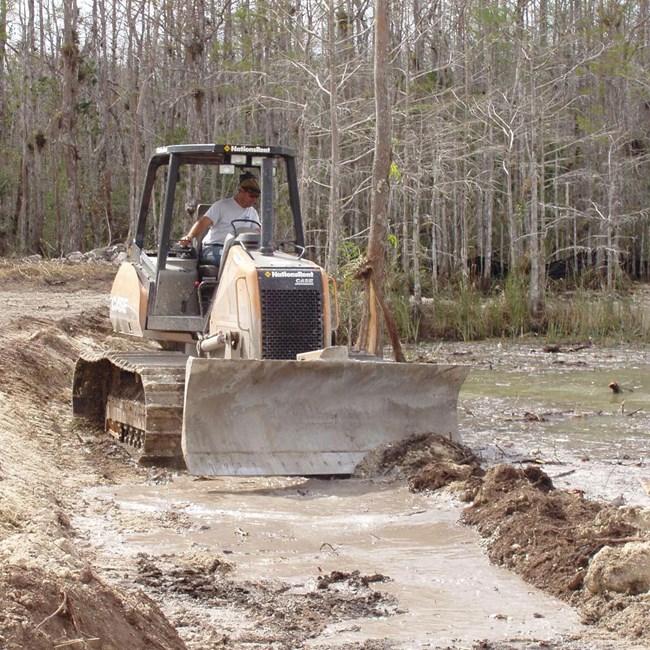Last updated: March 9, 2018
Article
Geoconservation—Disturbed Land Restoration

NPS photo
Disturbed land restoration (DLR) is the process of restoring lands where the natural conditions and processes have been impacted by development (e.g. facilities, roads, mines, dams, abandoned campgrounds) and/or by agricultural practices (e.g. farming, grazing, timber harvest, abandoned irrigation ditches) to the unimpaired natural conditions.
Lands disturbed by human activity often cause unwanted and long-lasting problems that affect other resources. Many of these disturbances obliterate soil profiles, exacerbate the invasion of exotic plants, result in contamination of water and soil, and/or cause erosion and sedimentation. These damages, in turn, frequently impair the quality of habitats, disrupt ecosystem functions, and cause problems for parks managing areas as wildlands.
Restoration is fundamentally a multidisciplinary pursuit that involves the understanding of the biological and physical systems and their interactions. The restoration of a sustainable ecological system often depends on the successful restoration of the physical conditions and processes with which the biological community evolved. Likewise, the ability of a system to sustain physical conditions and processes often depends on the condition and sustainability of the biological environment. In this context, disturbed lands restoration is an extensive thematic component of what is broadly known as ecological restoration. The Society for Ecological Restoration defines ecological restoration as "the process of assisting the recovery and management of ecological integrity. Ecological integrity includes a critical range of variability in biodiversity, ecological processes and structures, regional and historical context, and sustainable cultural practices."
The Role of the National Park Service
In many areas, National Park System units represent the last vestiges of once vast and undisturbed ecosystems. Yet, over 315,000 acres in 195 parks have been disturbed by modern human activities, including abandoned roads, dams, canals, railroads, grazed areas, campgrounds, mines, and other abandoned sites. Some of these features may be of historical significance, but most are not in keeping with the mandates of the National Park System units or the mission of the National Park Service, "to conserve the scenery and the natural and historic objects and the wild life therein...unimpaired for the enjoyment of future generations." (16 U.S.C. 1 et seq.)
In practice, natural system restoration is approached as a conceptual rather than an absolute goal. Although a standard dictionary defines restoration as returning something to a former or unimpaired condition, the NPS's use of the term natural system restoration recognizes that reaching the former or unimpaired condition may take many years to decades. Therefore, natural system restoration by the National Park Service typically involves correcting resource interactions that function unnaturally and ensuring that the directions of the recovery processes are along the proper trajectory, rather than attempting to recreate the end state of an unimpaired natural system. For example, removal of materials of a roadbed may be sufficient to allow for recruitment of plant species (via seed bank or seed rain) into that reclaimed area. If plant community succession is facilitated in this way and requires no other active management or species introductions, then the area may be considered restored. Note that monitoring this process is essential to such a determination and that considerations of animal species (especially invertebrates) and other microbial organisms that control many functions of an ecosystem make the claim of complete and successful restoration difficult. This makes the selection of appropriate and realistic goals and objectives all the more important to a project.
